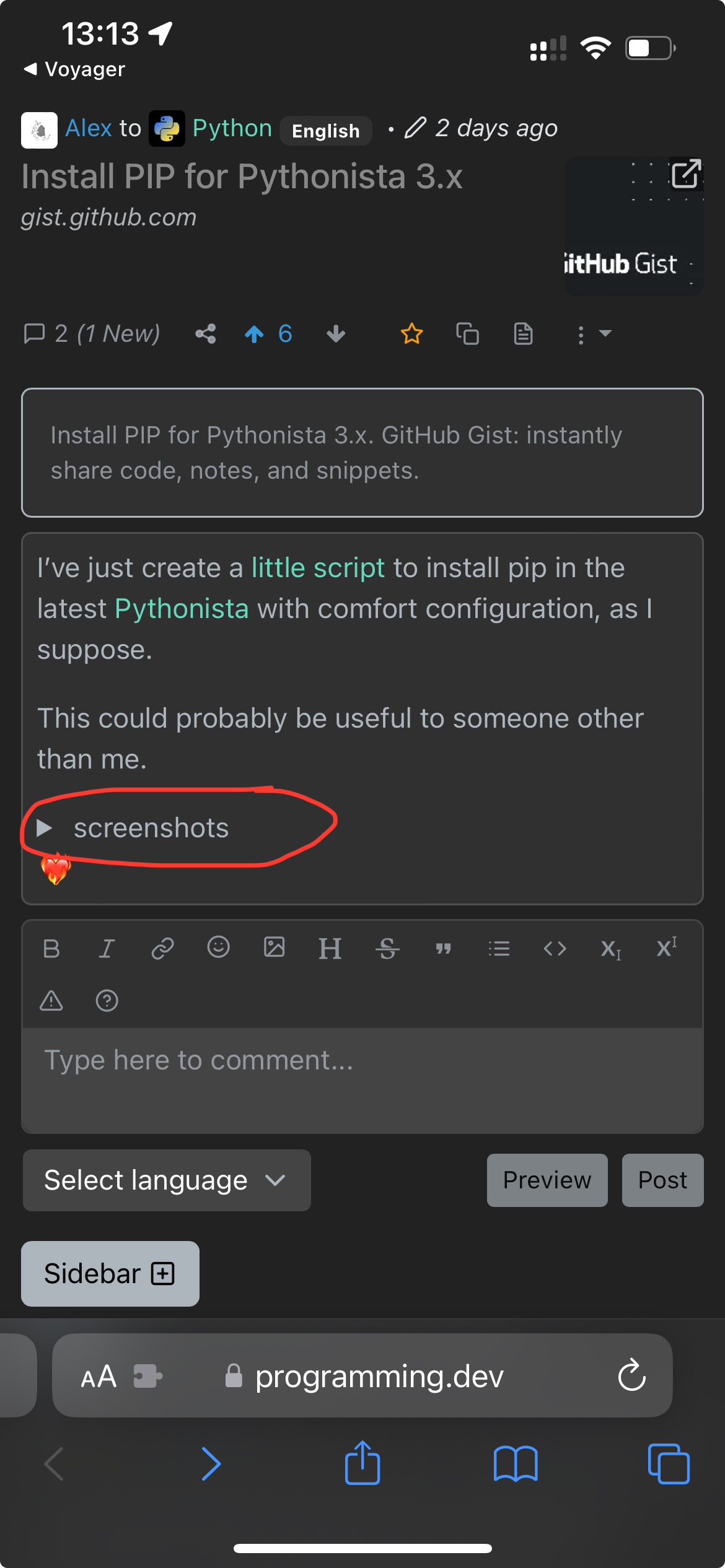Just one question - where it is native? Are you pretty sure?
Spending short lifetime for development and boring things.
–
$argon2id$v=19$m=512,t=256,p=1$J7IZNfNG3RC2FiSRzZfQzw$0seu3KTpAnSufFxXDbHccXnX81enF+A++beI9VvHVVA
- 3 Posts
- 24 Comments

 141·11 months ago
141·11 months agoUnison stores code in a database.
🫣🤨

 31·11 months ago
31·11 months agoDisabled, not needed. iOS.

 52·11 months ago
52·11 months agoIt’s to teach AI more properly?

 131·1 year ago
131·1 year agoNot Electron but yes unfortunately. It uses Ionic that isn’t native, but as declared “native-quality”, that means “mostly looks like native” but that’s not so 🤷🏻♂️. But anyway Voyager is cool. It could be really better with real native UI onboard of course.

 11·1 year ago
11·1 year agoI love ligatures and Fira Code (retina) is the best and absolutely comfortable for me.

 1·1 year ago
1·1 year agoSeems to my mistake. You question is about CI/CD services that supports Pijul. So yes, almost zero. But it’s like ouroboros. Just use pijul more then git and talk about it, and services will support it soon.

 1·1 year ago
1·1 year agoCI/CD
Pijul as git or hg or any other is a VCS, so what are you talking about? If you mean web-service like GitHub with social things and CI/CD services, so yes, nest have CI/CD with nix. But mostly you shouldn’t host your huge project on the Nest because, as I’m absolutely sure, you as anyone other should create your own host (public or private) to support decentralization to prevent github-like centralization situation. Pijul was created with decentralization in first place in mind.
Not tested with big projects in production
Not publicly. Many private projects, personal and in-company, that uses pijul are existing. Personally I have one HUGE personal. Also I worked for two companies where pijul is used.

 73·1 year ago
73·1 year agoAh! 😣 Why not nest or self-hosted pijul!?

 3·1 year ago
3·1 year agoKind of destiny 🤦🏻♂️
I started programming when I was in primary school. And I liked it very much, even though I didn’t understand much even then. But it was impossible to stop and here I am writing this after about 30+ years.
What exactly attracted me - my father soldered a Russian clone of the Sinclair ZX Spectrum, showed me a couple of games loaded from a tape cassette, and I was curious how it works.

 33·1 year ago
33·1 year agoMore than ten years ago, I was a team-lead in a game development company and during another crunch I was very overloaded with tasks, including a code review. And of course, I missed some things. We optimized the game, which in general did not do 30 fps on the target machine with minimum requirements, and the target was at least 40 fps. During the month, we jointly optimized everything so that we were able to achieve almost stable 40 frames, but this was not enough and periodically there were drawdowns up to 15-20 fps. Everyone is in panic, there are no ideas, we’re optimized everything.
No, I understand that there is no optimization limit apriori, but I mean an adequate opts without rewriting everything to assembler specifically for all supported architectures.
So, one night I looked into the event loop initialization and found that the initialization happens twice. Twice. Two parallel event loops. That is, two parallel cycles of logic and state updates. That night, by deleting one line, I optimized the performance of the game by more than 100%. 🤦🏻♂️
I investigated and found out that this line of secondary initialization was left by junior “for debugging” and forgotten in the crunch. And I missed it on the review.
I’ve keep this story a secret all these years. And now I’m not revealing names. Otherwise, it can have a dramatic impact on the careers of many.

 1·1 year ago
1·1 year agoThat new problem isn’t about links in post body, but about link in the “link-post”. To reproduce tap to “example” link and then tap to link there - will open in the browser instead of this app.

 1·1 year ago
1·1 year agoOkay, seems to I was wrong about special url-handling. I needed for lemmy hosts as minimum. As example, will be great to open links to posts in the same app instead of in-app/os’s browser. So now I’m sure we need it for various urls and I was wrong 😑
Excepted result, kinda:


 1·1 year ago
1·1 year agoIs it really needed to create special handlers for special hosts? Where YouTube is there and Twitter and other services. So, how much special handlers there will be?))

 3·1 year ago
3·1 year agoOkay, I can reproduce it on iOS and it is expected behavior.
In the settings turn on open links in in-app browser. Results is expected as promised - in-app web-view.
Otherwise if you set “open links in default browser”, it opens with YouTube app after all because of app-url-scheme, you know.
So, IMHO, all right on iOS.

 1·1 year ago
1·1 year agoJust link to test and reproduce. https://youtu.be/1riOhUGTY2U?si=dU820qhERnmCzTS0
I know Pyto, but I just don’t like in-apps and subscriptions and also just more like Pythonista’s UI.



Okay, just take a look at code. https://github.com/aeharding/voyager